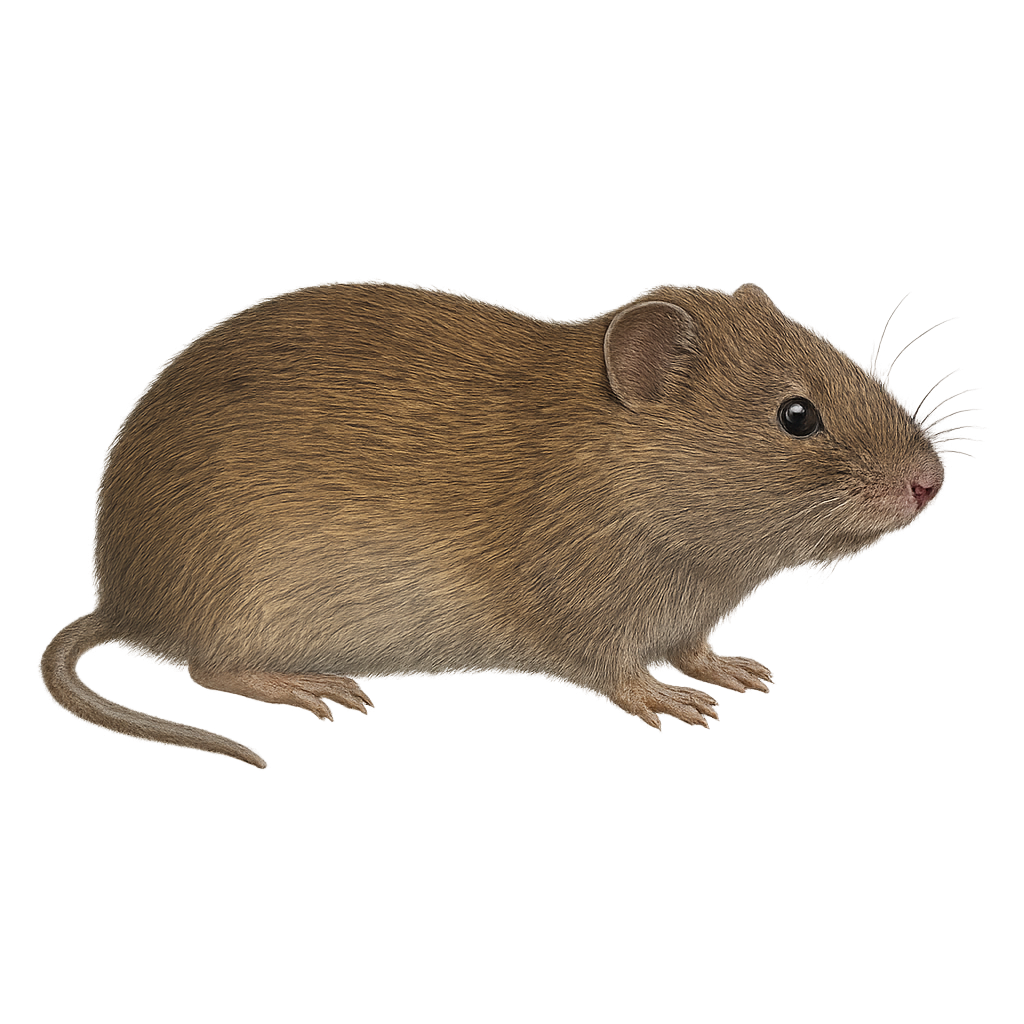Your wildlife photography guide.
Explore the common vole in detail, study its behavior, prepare your shots.
Where to observe and photograph the common vole in the wild
Learn where and when to spot the common vole in the wild, how to identify the species based on distinctive features, and what natural environments it inhabits. The WildlifePhotographer app offers tailored photography tips that reflect the common vole’s behavior, helping you capture better wildlife images. Explore the full species profile for key information including description, habitat, active periods, and approach techniques.
Common vole
Scientific name: Microtus arvalis

IUCN Status: Least Concern
Family: CRICETIDAE
Group: Mammals
Sensitivity to human approach: Suspicious
Minimum approach distance: 3 m
Rut period: March to September
Gestation: 19-21 jours
Births: March to October
Habitat:
Meadows, cultivated fields, roadsides
Activity period :
Mainly active at night, generally discreet during the day.
Identification and description:
The common vole, or Microtus arvalis, is a small rodent belonging to the Cricetidae family. It is widely distributed across Europe and Western Asia. This rodent measures about 9 to 12 cm in length, with a tail of 3 to 4 cm. Its fur is typically grayish-brown on the back and lighter on the belly. It primarily inhabits meadows, cultivated fields, and roadsides. The common vole is an herbivore, feeding on grasses, roots, and seeds. It plays a crucial role in the ecosystem as prey for many predators such as birds of prey and foxes. Its population can fluctuate significantly from year to year, thus influencing the abundance of its predators.
Recommended lens:
Macro – adjust based on distance, desired framing (portrait or habitat), and approach conditions.
Photography tips:
To photograph the common vole, it's advisable to use a macro lens to capture the details of this small rodent. Look for it in meadows or cultivated fields, especially at dawn or dusk when its activity peaks. Keep a distance of at least 3 m to avoid scaring it away. Be patient and discreet, as it is suspicious and can quickly hide. Use a tripod to stabilize your camera and achieve sharp images.
The WildlifePhotographer App is coming soon!
Be the first to explore the best nature spots, track rutting seasons, log your observations, and observe more wildlife.
Already 1 430 wildlife lovers subscribed worldwide

